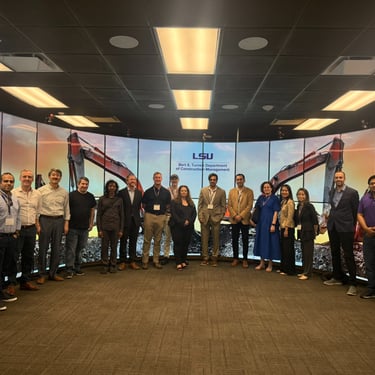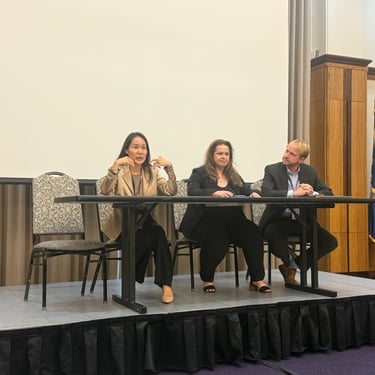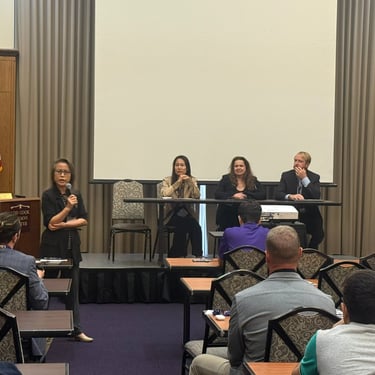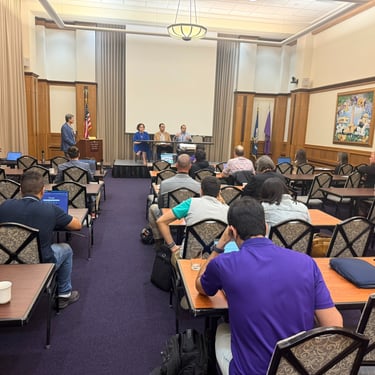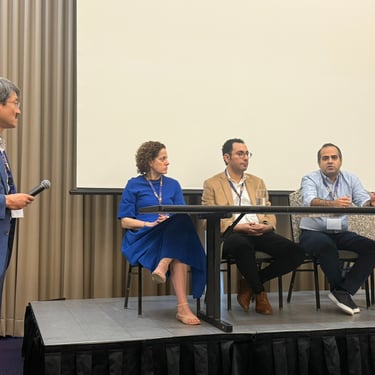Exploring the Future of Construction: A Successful Workshop
Workshop on Immersive Training on Human-Robot Collaboration for Extraterrestrial Workforce Development
6/8/20251 min read
On June 6, 2025, Dr. Jafari and his team hosted a dynamic and interdisciplinary workshop titled “Immersive Training on Human-Robot Collaboration for Extraterrestrial Workforce Development.” Held on the LSU campus, the event brought together leading experts, researchers, and educators to explore emerging frontiers at the intersection of robotics, immersive technology, and construction workforce training.
The workshop featured three focused panels:
Human-Robot Interaction in Construction: Experts examined the psychological, technical, and operational challenges in deploying robots alongside human workers on construction sites. Discussions addressed gesture recognition, safety protocols, situational awareness, and the need for robust HRI benchmarks tailored to the construction context.
Future Extraterrestrial Construction: This forward-looking panel explored scenarios and design considerations for building infrastructure on lunar and Martian landscapes. Panelists addressed geo-hazard mitigation, energy sourcing, and the role of robotic autonomy in extreme environments.
Next-Generation Workforce Training: As construction evolves, so must the ways we prepare the workforce. This panel focused on immersive, interactive, and intelligent (3I) learning environments, highlighting how VR simulations and AI-driven tools can develop core competencies like adaptability, agility, and algorithmic thinking among future construction professionals.
Following the panels, participants engaged in interactive lab tours across LSU facilities, showcasing innovations in VR-based training, robot navigation, and simulation testbeds that support ongoing research and education. We were thrilled by the high level of engagement and thoughtful discussion throughout the day. Participants represented a wide range of disciplines—from construction management and engineering to computer science and educational technology—highlighting the truly interdisciplinary nature of this challenge.
We extend our deepest thanks to our panelists, who generously shared their insights and vision; our attendees, whose questions and energy made the event highly interactive; and our team members, whose hard work behind the scenes ensured the event's success.
We look forward to continuing this important conversation and fostering new collaborations at the intersection of construction, robotics, and immersive learning.
